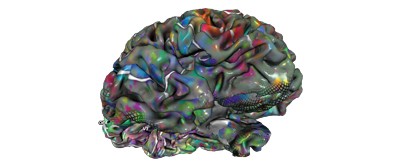The Home of Meaning

By Mike Howie
Words give meaning to the world around us. They allow us to comprehend the things we see and communicate the things we feel. Without words and their meanings, without all the complexity they describe so simply, we humans wouldn’t be where we are today. So where does all that meaning live?
Mapping Words
Neuroscientists previously believed that some localized region of the left hemisphere of the brain was responsible for handling language. But according to Jack Gallant, a neuroscientist at the University of California, Berkeley, and his team, meaning and language are actually stored all over the outer layer of the brain.
This isn’t to say that words are thrown haphazardly about wherever there’s a bit of space. Instead, they’re neatly grouped together according to their meaning. For example, words related to family — wife, aunt, brother — tend to be stored in a small area of the right temporoparietal junction, while words related to shape live in a small area of the left occipitotemporal cortex.
However, one word can live in more than one place. The word “top,” for instance, lives in an area related to math, plus an area related to clothing, and an area related to buildings. None of this storage is random — groups of words are stored in areas of the brain that are related to similar functions. So words that describe things you see are stored near the visual cortex, which processes visual information from your eyes.
Watching While You Listen
Gallant and his team discovered all this by using a functional MRI scanner to monitor blood flow in the brains of volunteers while they listened to recordings of people telling personal, narrative stories to live audiences, which put the words in context for the listener. By comparing where blood flowed when a volunteer heard certain words, they were able to map meaning to parts of the brain.
With only seven participants in the study, the results aren’t entirely conclusive. But it certainly looks like Gallant is on to something — the maps of all seven brains were remarkably similar. With a larger, more diverse group of people to study, researchers will begin to see what, if any, differences there are between people of different genders and backgrounds.
There’s a lot more work to be done here. Beyond studying more people, the team has yet to study a language other than English. And who knows? One day, this research may help decode words that a person thinks, enabling ALS and non-verbal Autism patients to communicate in new ways.
Visit gallantlab.org/huth2016 to explore a map of where meaning lives in the brain.
CLASSROOM DISCUSSION
Do you think a larger, more diverse group of people will show a different map? Why or why not?
What other applications does this research have?
VOCABULARY
- Magnetic Resonance Imaging
- Cortex